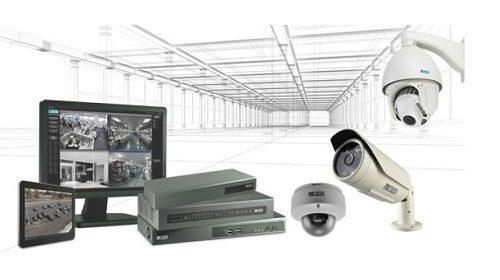A network video recorder (NVR) is primarily used to record the video streams of cameras. In medium and large scale enterprises where a huge number of cameras are installed, it becomes a necessity to incorporate a network of NVRs. It provides a systematic log of various camera video recordings and the space required to store the same. However, with the advancement in technology, NVRs are now able to assist or perform many other functions which enhance the security and ease of operation. Some of these features are unique with respect to IP NVR system, while some are found in most of the NVRs produced these days.
Matrix NVRs hold one of the unique features called Cascading that eliminates the need of a server to operate CMS (Centralized Management System) as it works on client-server architecture where each NVR is divided into two parts, client and server. The client of one NVR can communicate with the other one’s server and vice versa. Therefore, each network video recorder can supervise and interface with several other NVRs, bypassing the need of a server to do the same, which makes this solution very cost-effective. For example, if multiple NVRs exist in a network, they can still be governed from one of them locally. A single device can act as the server (or a master device) and can control 19 other client (or slave) NVRs. Similarly, there can be multiple master devices as well, monitoring various sets of other (slave) NVRs. Finally, the master device can be directly connected to a screen and output from all slave NVRs can be monitored.
One of the major concerns of an IP NVR manufacturer is the storage space to store the recordings. Required storage capacity is determined by the number of factors such as IP cameras in the network, resolution, type of recording and retention duration. If many cameras are connected, optimizing storage becomes indispensable. To resolve this problem, following three features in a NVR come in handy:
Motion based recording: There are instances when there is no motion at all but are still recorded, hogging storage space unnecessarily. With motion based recording enabled, the NVR stops recording when there is no motion. Therefore, the storage space is utilized for only those recordings in which motion has been observed.
Adaptive recording: According to Indian Government policies for public areas, it is mandatory to record video streams persistently, irrespective of motion. To approach this requirement, NVRs have the option of adaptive recording, in which the number of frames per second change, adapting to the motion. This means, when there is no motion the NVR for IP cameras will still record, but with less frames as compared to when there is motion. Adaptive recording can economize storage space by as much as 50%
Camera-wise recording retention: Each area in an industry fulfils a unique purpose and thus, the priority of camera recordings vary. Camera-wise recording retention provides flexibility to configure the number of days for retaining recordings based on the predominance of a camera and the area where it is installed. For example, recording retention for canteen can be set to 15 days, that of reception area, to 30 days while for the parking area recording retention can be set to 40 days.
These are some of the many features that NVRs with modern technology come equipped with. There are, however, still a large amount of functions that a NVR can perform.